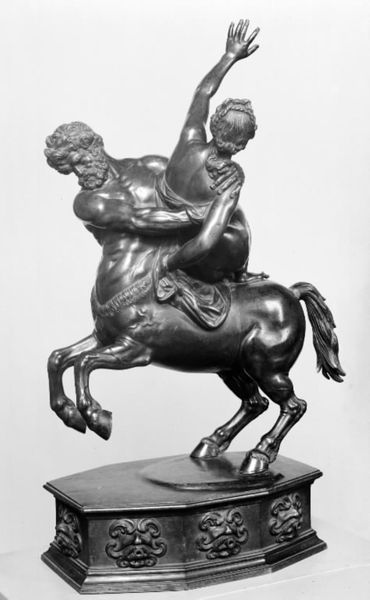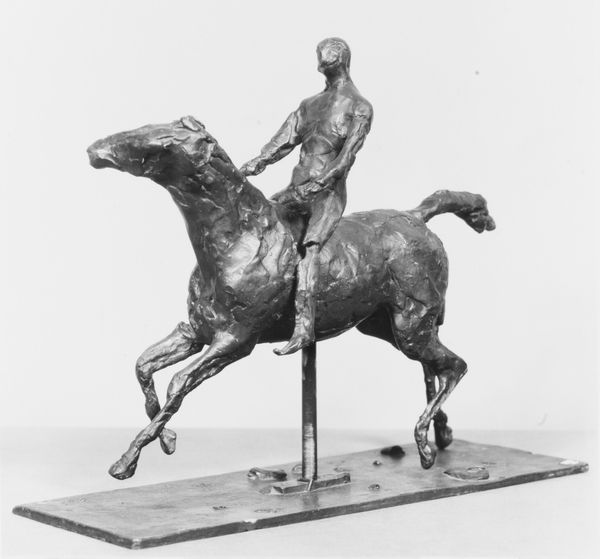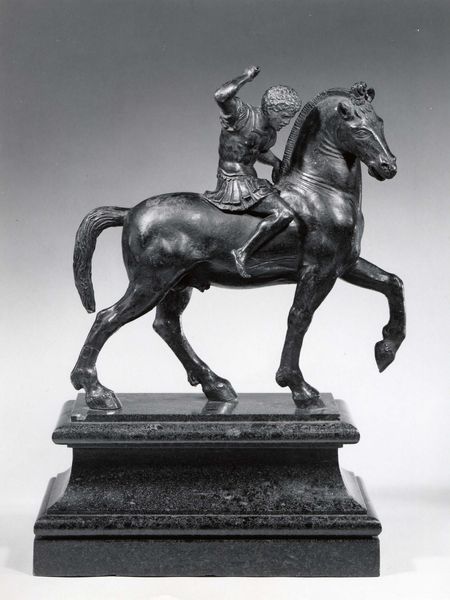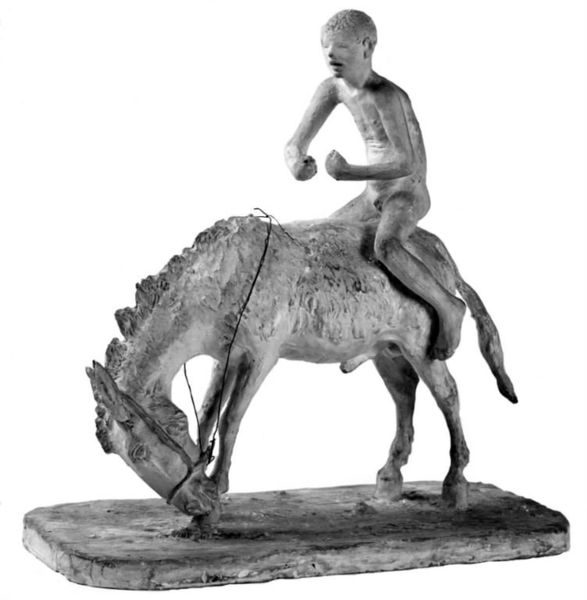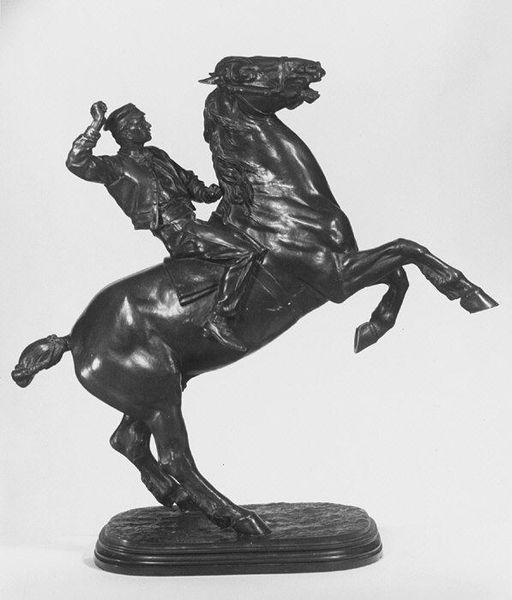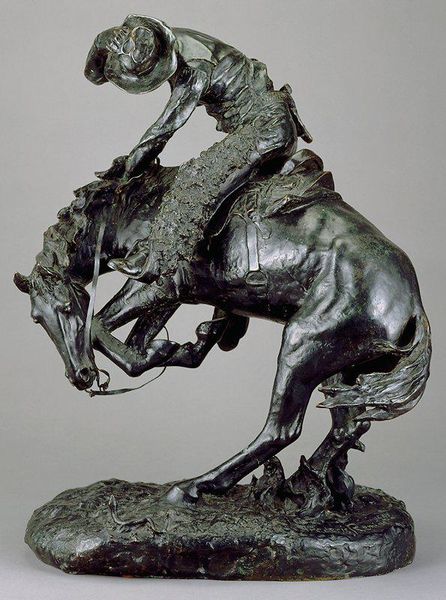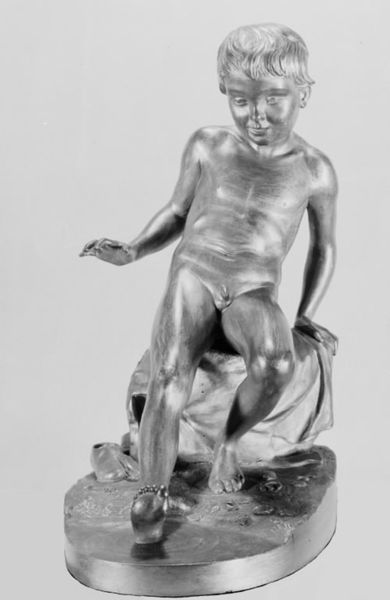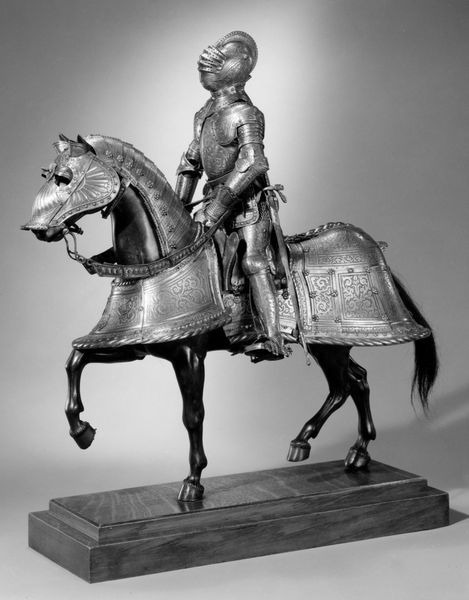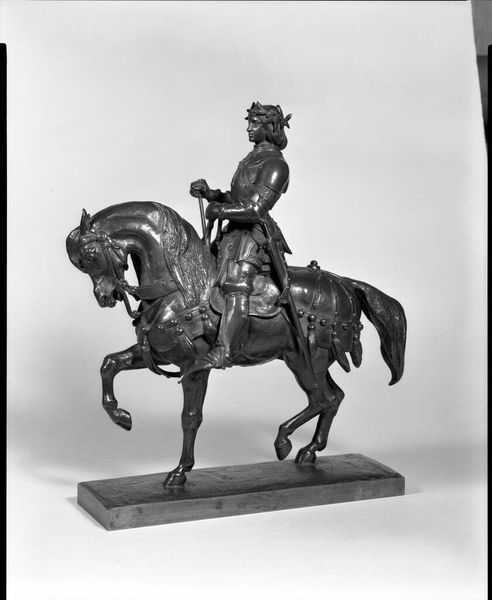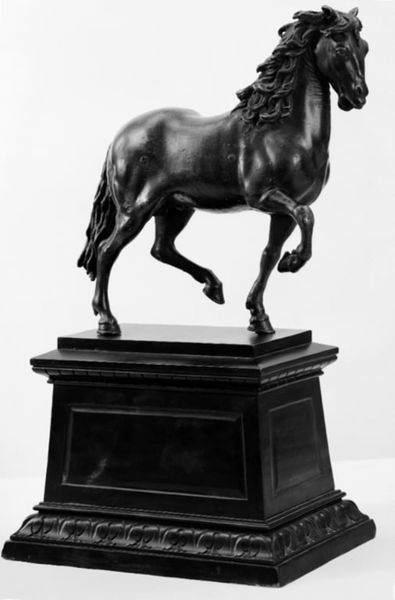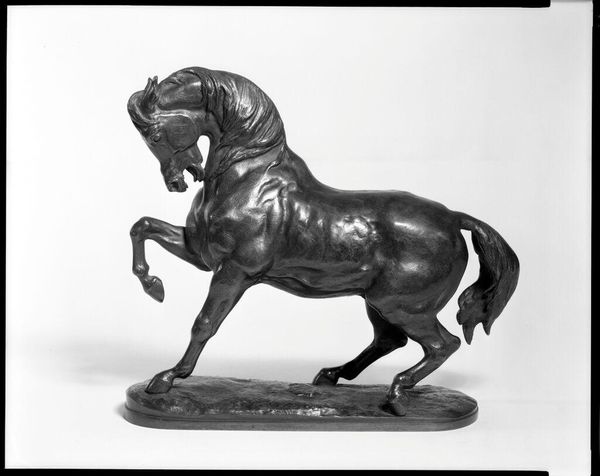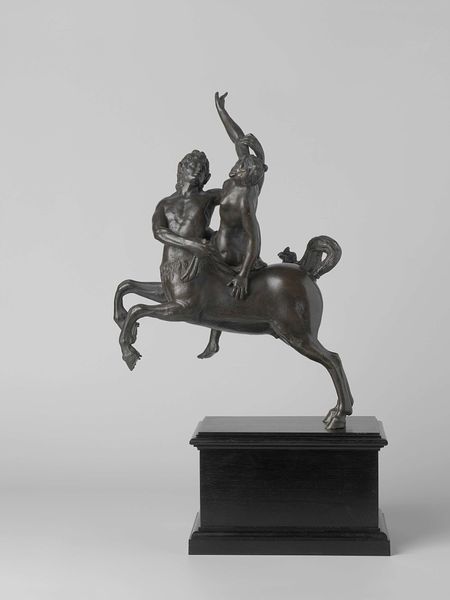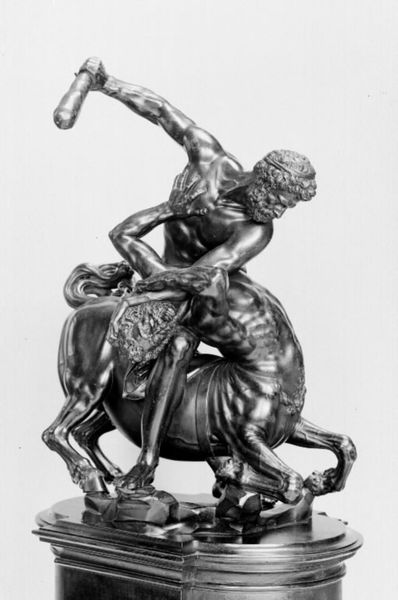
bronze, sculpture
#
sculpture
#
bronze
#
figuration
#
sculpture
#
realism
#
monochrome
Dimensions: 26.7 cm (height) x 10.3 cm (width) x 25.8 cm (depth) (Netto)
Curator: Immediately, I find myself both amused and somewhat unnerved. It has a disquieting jollity, would you agree? Editor: Well, let's orient our listeners. What we are observing is a bronze sculpture titled "Silen på et æsel," which translates to "Silenus on a Donkey," created in 1861 by the Danish artist August Saabye. It's currently part of the collection at the SMK, the National Gallery of Denmark. Curator: The choice of Silenus is quite loaded. In classical mythology, he’s the tutor and faithful companion of Dionysus, yes? Always drunk, always jolly, a figure of primal wisdom concealed in inebriation. It's as if the sculpture encapsulates the duality of human nature – the earthly and the divine bound together. Editor: Precisely, and think of the historical context of mid-19th century Denmark. The rising tide of realism in art sought to depict life as it was, not necessarily as idealized myth. Yet, by invoking a mythological figure like Silenus, Saabye adds layers of social commentary. This sculpture challenges us to reconsider conventional notions of virtue, sobriety, and wisdom. Curator: And isn't that cup he’s raising so defiant? As if to toast a world turned upside down. We can trace this imagery of reversed hierarchies back centuries, maybe even millennia. The wise fool, the satyr… these figures act as social valves, challenging societal norms through subversive humor. The donkey, too, traditionally carries symbolic weight of stubbornness and foolishness—a comical parody of equestrian triumph. Editor: It raises questions about the role of the artist. Is Saabye offering a critique of Danish society through this depiction, or is it a celebration of irreverence? I would suggest, both. By anchoring it within classical imagery he allows viewers to contemplate familiar traditions while facing the winds of change. Curator: Indeed, by placing such weight—literally and metaphorically—on the shoulders of a humble donkey, Saabye is asking what we truly value. Are our so-called virtues genuine, or just social constructs propping up the status quo? Editor: I find this exploration of duality a powerful way of reflecting history. I think it can act as an excellent introduction for our listeners to Saabye’s work, too, showcasing the cultural tensions of the era. Curator: An interesting blend of celebration and defiance frozen in bronze for eternity. What’s not to love?
Comments
No comments
Be the first to comment and join the conversation on the ultimate creative platform.
